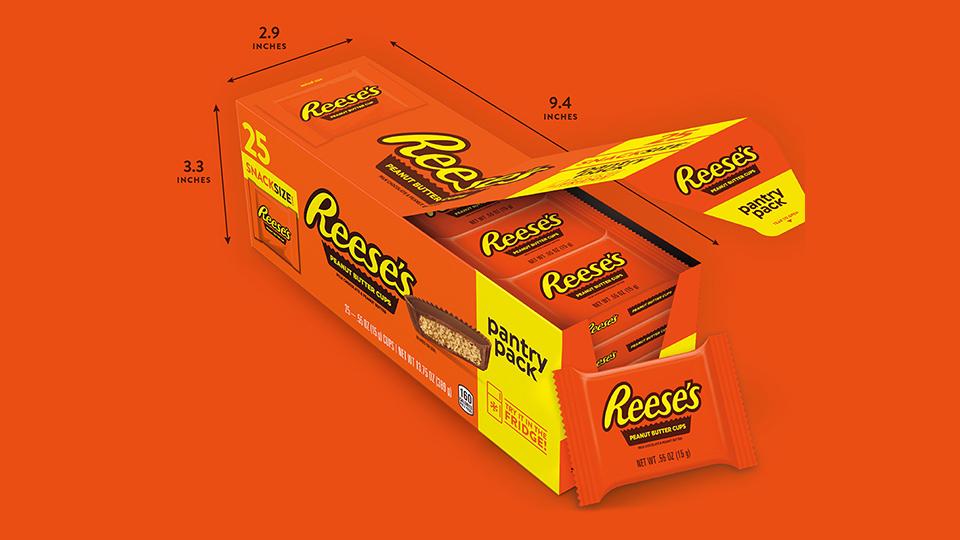Hershey Automating Consumer Insights to Slash Churn and Grow Retail Indispensability
The Hershey Company has been experimenting in leveraging consumer insights for its price pack architecture — a key strategy in today’s CPG playbook to appeal to price-sensitive consumers.
Earlier this year, Hershey launched two new pack types — the Pantry Pack and the King SIze Multipack — both of which were informed through Hershey’s consumer insights team. The company leveraged a range of methodologies to collect the insights, Lynn Hemans, VP of consumer intelligence and analytics, tells CGT, including deep-dive quantitative work to understand the needs the packs fulfill and where whitespace exists, as well as qualitative co-creation with consumers.
Its Pantry Packs employed consumer focus groups and home testing, for example, while the King Size packs were designed with digital purchasing behavior as a priority, according to the company, given that many online retailers eschew single king-size bars because of reduced profitability.
“We find starting with consumer needs leads to more successful launches — product or packaging,” notes Hemans.
[See also: 2022 Consumer Goods Sales & Marketing Report]
By leveraging consumer insights in product development, Hershey has reduced churn and strengthened its retail relationships through the communication of its findings — with the ultimate goal of being an indispensable consultative partner.
“We communicate with our retail partners constantly to provide insights and solutions based on human behavior from several data streams to provide recommendations to drive incremental and accretive transactions,” says Hemans. “We are harmonizing and visualizing real-time data points together using automation to provide solutions quicker than ever.”
The company also provides insights and recommendations to its partners based on consumer behavior changes. One recent example includes the “second basket,” in which consumers are ordering online and picking up the order in stores or through curbside.
“In several instances they are still going into the store to pick out their produce, meat, or other items they want to select on their own,” she explains. “These baskets are typically smaller and go through self-checkouts but are complementary to their online order.”
Hershey has long been leaning into consumer insights to adapt for shifting needs, including adjusting its marketing creative. For the 2020 Easter season, the company pivoted its marketing creative away from egg hunts and toward Easter baskets to meet consumers searching for home-centered celebrations for their kids.
Similarly, they pivoted advertising dollars away from gum during the pandemic — consumers cared less about their breath while at home, notes the exec — and more toward the very popular comfort food confectionery category.
Hershey is additionally leaning into social listening for consumer understanding thanks to its ability to provide deeper insight about their brand perception, not to mention the ability to monitor marketing campaigns for authentic reactions.
“By understanding the baseline level and tone of discussions, we’re able to spot changes that inform us on whether our campaigns are having the desired effect,” Hemans says. “It also has played an important role in understanding the environment around seasonal celebrations. If we think back to Halloween of 2020 as an example, social listening was one of the primary tools we used to determine how much trick or treating there would be and what sort of precautions consumers were going to be taking.”






